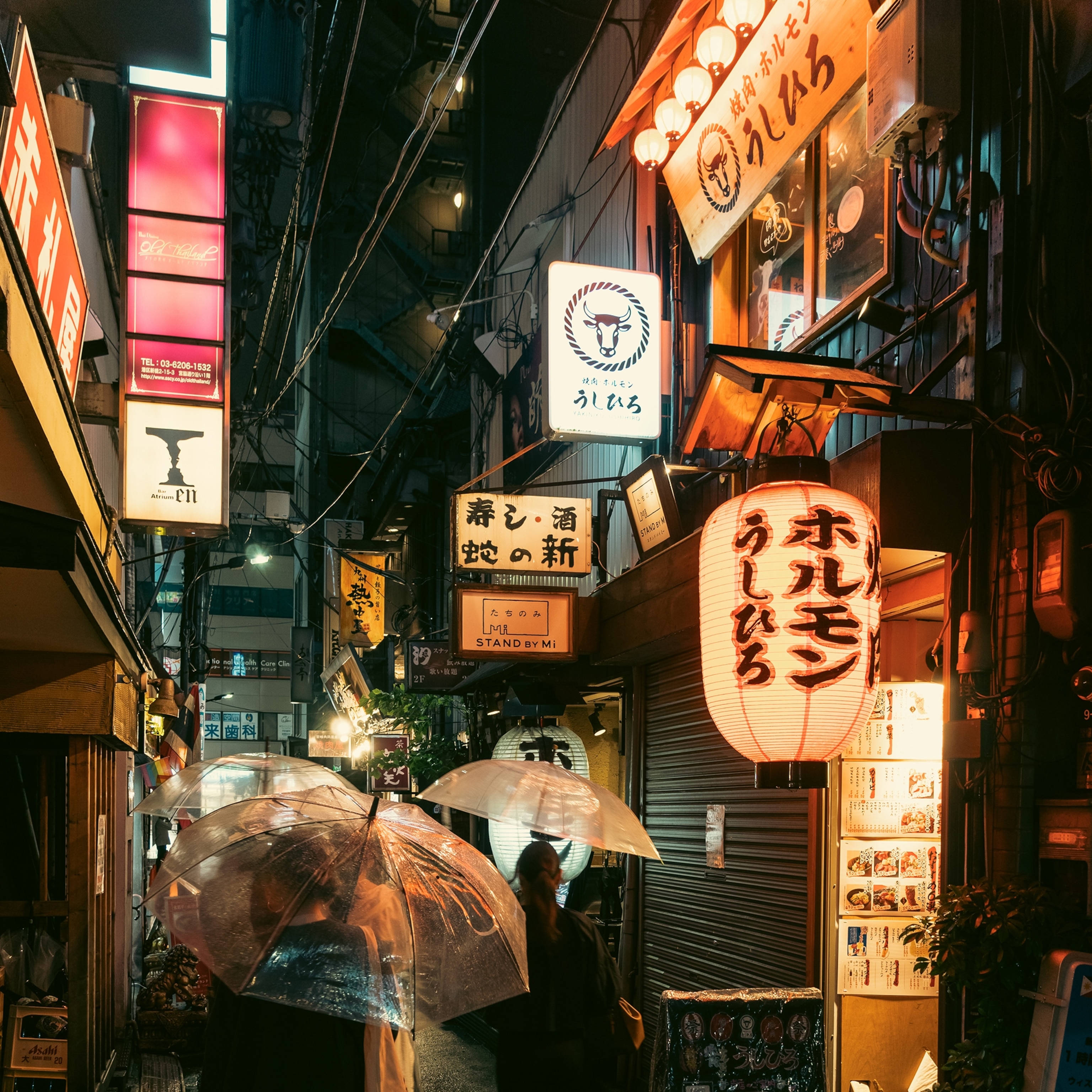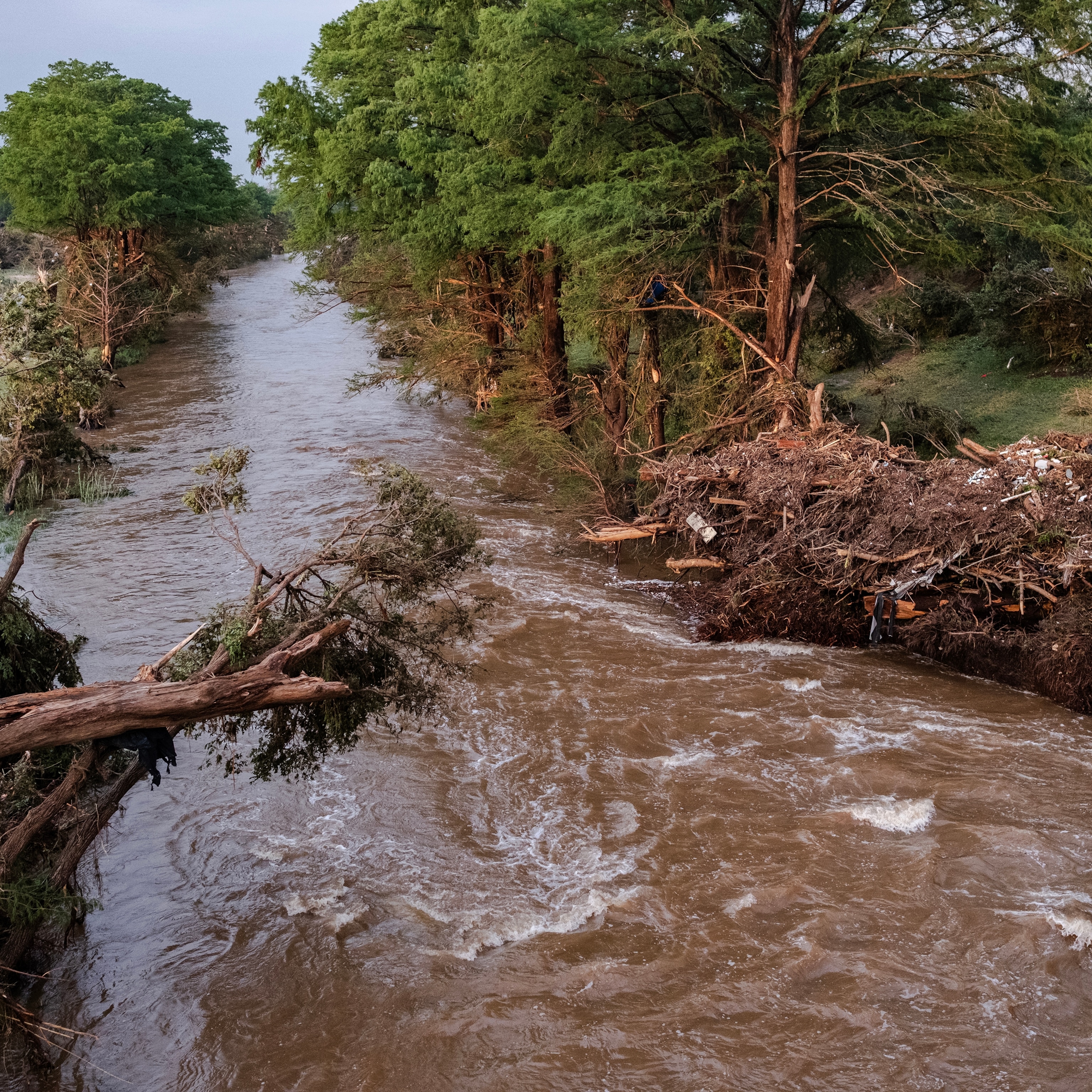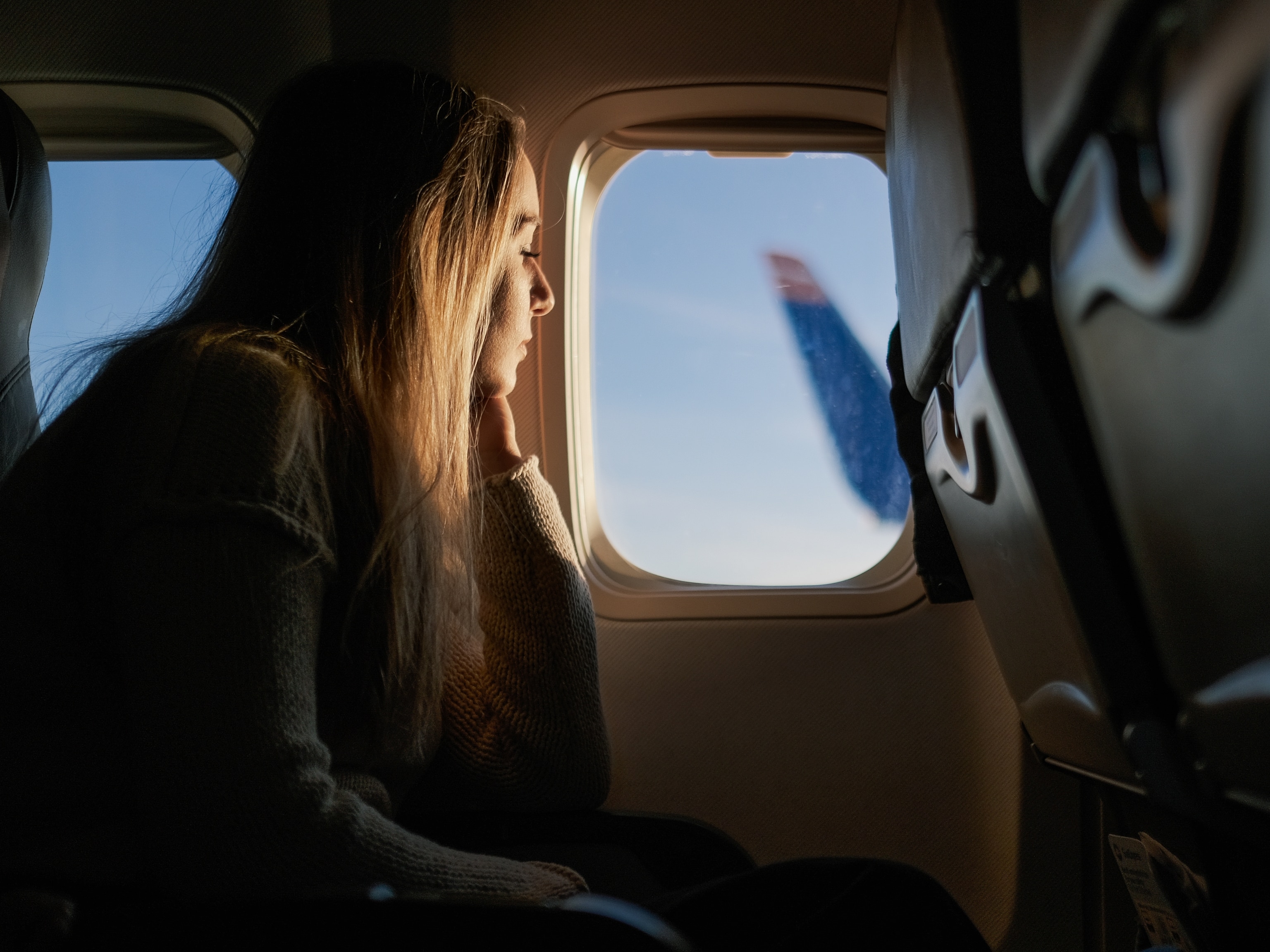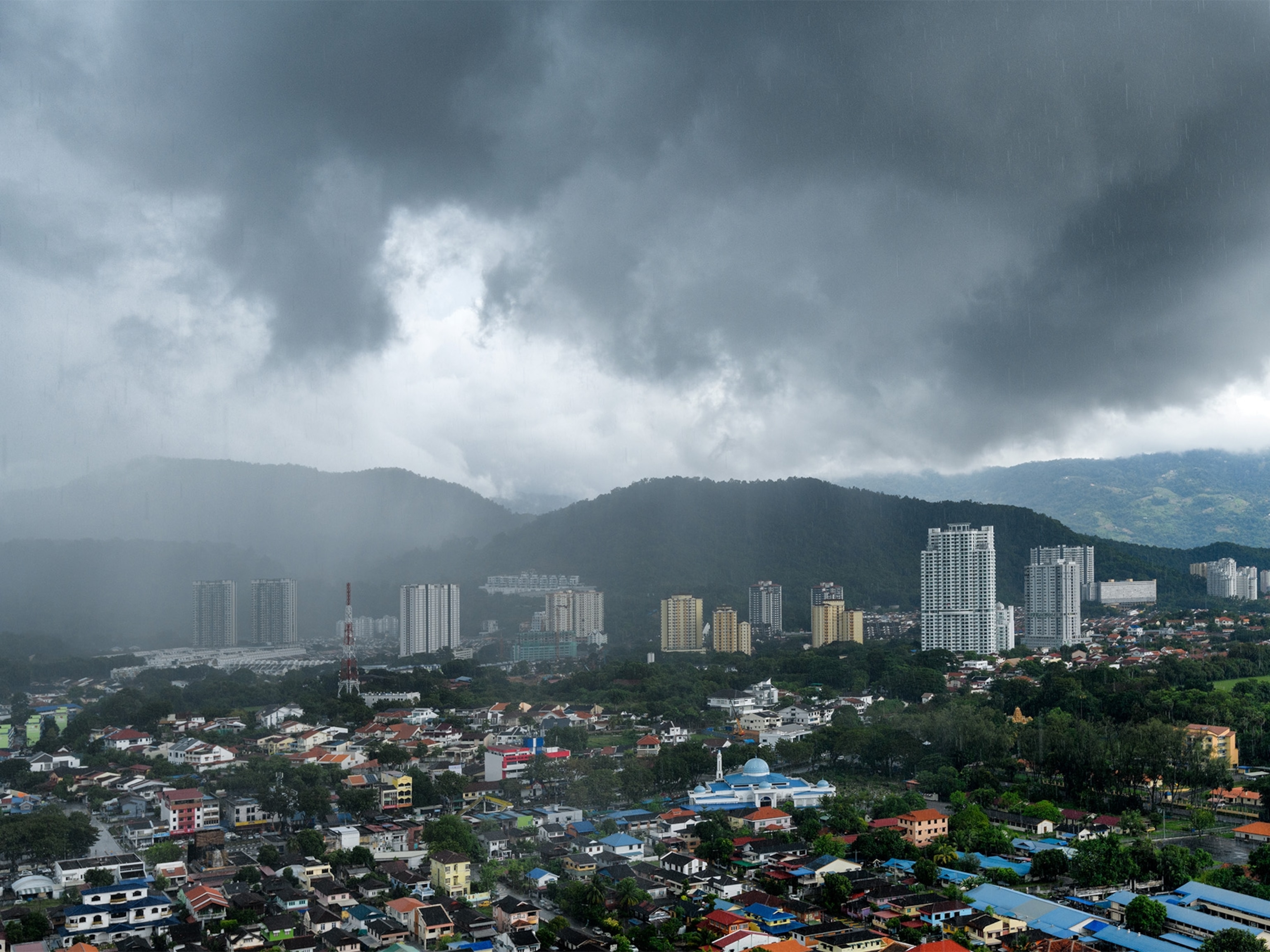
Rain, Rain, Don't Go Away
Real Travel
I am lazing in a bamboo armchair reading a book outside a cottage on a sunny cliff overlooking the Arabian Sea when a blast of chilly air brings goose pimples to my bare arms. Startled, I look up. A minute ago the sky was blue, and clear. Now a thick, ominous band of sickly gray is spreading for miles along the horizon, over a greenish, roiling sea.
The ash-colored bank of clouds steamrollers its way toward the shore, and toward me, like an out-of-control train hurtling into a station.
(Rarely Observed 'Quadruple' Rainbow Isn't What it Seems)
I shut my book, run into the hut, slam the door, batten the shutters, and wait. Gloom folds over my little refuge; I flip on the lights. A minute later, I hear a plop! plop! plop! noise overhead. It sounds as if somebody outside is teasing me by flinging fistfuls of pebbles onto my roof. Soon the plops quicken into a faster staccato pulse, and a minute later, boom! Le déluge. The lamplights quiver, turning bright and dimming again, as if they can’t make up their minds what to do. Then they go out. I curl up on the bed in the dark, huddling under a thatched roof in India.
It’s not for long. Forty minutes later I’m back where I was before: book, armchair, sea, sun. The only signs of the recent downpour are some scattered puddles, quickly being sucked dry in the afternoon heat. I’ve read about this phenomenon for many years, wondered what it was like. Now, at last, I’ve experienced the most famous, and probably the mightiest, rain on Earth: India’s monsoon.
I usually hesitate to go to places during their rainy season, which puts me right in the mainstream of travelers, I’m pretty sure. What guidebook would be complete without the annual rainfall chart in the back, warning one and all, via ominous black bars, that 300 inches of water cascades upon your dream destination in the months of June, July, and August? When people sidle up to me at gatherings and parties to talk about travel, one question is as predictable as showers in New York City in April: “We are planning a trip to [fill in the blank] this year. By any chance, do you know … when is the rainy season there?”
Rain, of course, can come to any place at any time, as anyone who has been caught in a flash thunderstorm in a bone-dry Utah canyon (not recommended!) knows. Yet our guidebooks, travel photographs, tour brochures, and blogs commonly tell a different story. Where in those glossy pages are the cloud-covered beaches, the soggy mountain vistas, the drizzle-dappled cathedrals? We see nothing but sunny blue skies, as if some all-powerful censor declared precipitation an X-rated taboo. We may prudently pack an umbrella when we’re heading out on the road, but nobody planning a journey wants to imagine actually opening one.
Yeah, rain can be a drag for a traveler. I’ve suffered in clammy clothing that stays damp for days. I’ve had to toss out shoes when the wet soles peeled away from the lasts. Still, I believe rain doesn’t ruin our travels—it enhances them. For one thing, it throws a curveball into our plans, compelling us to improvise. And when we travel, improvising almost always is a positive thing because it forces us out of our boxes. I wouldn’t have found my favorite ceramic coffeepot if a nasty squall hadn’t forced me to take refuge in a dusty secondhand curio shop in Amsterdam. And how many interesting people would I not have met, how many delightful conversations would not have taken place, if some downpour hadn’t nudged me into a dark bar or unknown café, or stranded me alongside strangers under awnings, trees, marquees?
Rain has another powerful impact on travel. I think we humans are hardwired to react viscerally, even emotionally, to it. Just as some people get physical twinges in their back or knees when the weather shifts toward the wet side, I get twinges of feelings. Sometimes it’s that classic rainy-day depressive mood (it’s really true that rain may “dampen one’s spirit”). Yet as I’ve traveled and become more of a connoisseur of the different types of precipitations that our amazing planet manages to whip up, I’ve discovered that rain embraces a wider range of emotions. There are the warm, sexy afternoon thundershowers in the Caribbean, the aggressive thunder-and-lightning storms in the American Midwest, the contemplative, bookish fogs of a London February.
Then there is Hilo, Hawaii, one of the most amazing rain cities I’ve ever visited (and, at 130 inches of precipitation a year, one of the wettest). Hilo is located between high mountains and warm Pacific trade winds. The atmosphere can change from wet to dry in seconds. And even stranger stuff: One day I was walking down Hilo’s main street under a sun so broiling that I started to fret about not having applied sunscreen. Astoundingly, the other side of the street was not only in the shade—it was soaking in a vaporous mist.
That was when the traveler in me wondered, what would my personality be like if I happened to live in a rain-crazy place like Hilo? Would my moods, like the fickle weather, begin drifting restlessly between misty shadow and cheery sunlight? Would I become unable to function in places where the climate stayed put for more than two hours at a time?
- National Geographic Expeditions
These thoughts resurfaced as I watched, recently, the wonderful new Woody Allen film, Midnight in Paris. The movie’s main character, played by Owen Wilson, is a dreamy romantic screenwriter who longs to rub elbows with Ernest Hemingway, Pablo Picasso, F. Scott Fitzgerald, and other artsy types in 1920s Paris—a Paris where, in his imagination, it’s almost always raining. So in his real life he is constantly trying to drag his fiancée out for evocative, rain-misted Parisian walks. She refuses, whining that the excursions will ruin her Manolo Blahniks.
The hero of Midnight in Paris is a guy so in love with the City of Light that he loves it not “even in the rain” but because of it. I’m a traveler, not a movie director, but I do understand. Rain doesn’t add just emotional color to a destination; sometimes it shapes the destination.
In the middle of the monsoon season on my cliff in India the rain lashes, splashes, and transforms everything it touches—including me. For as long as it falls, I am no longer just in India: I am a traveler in a whirlwind world of water.







